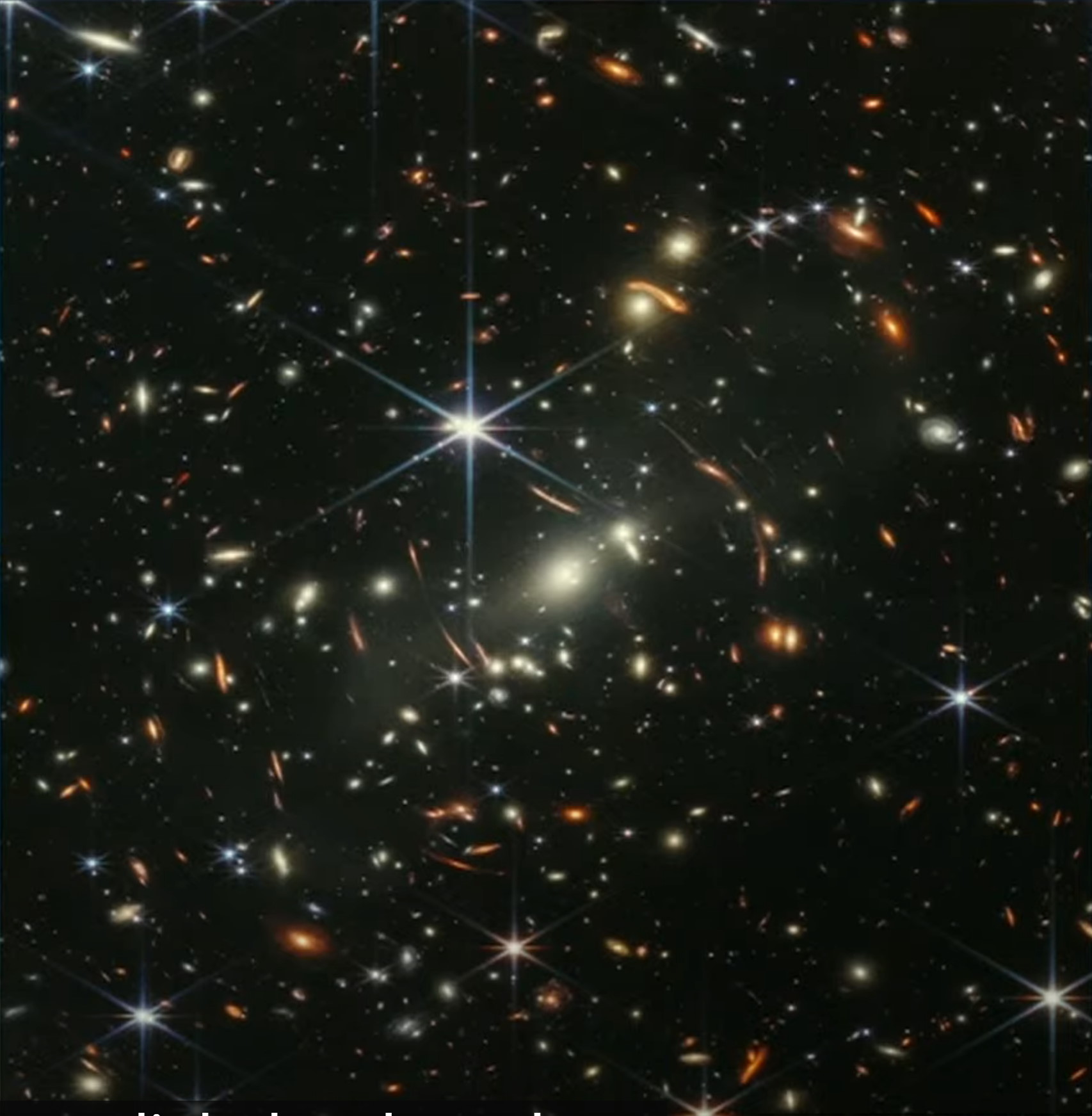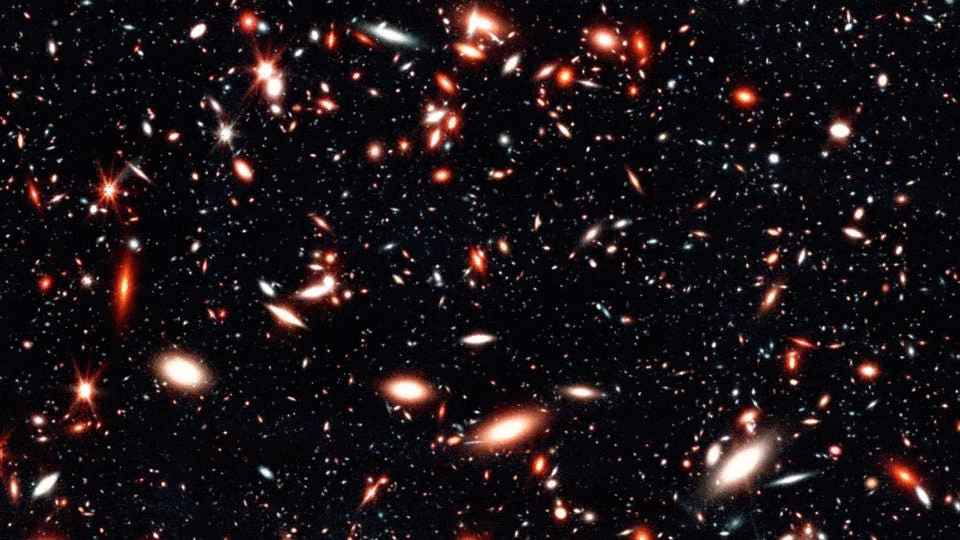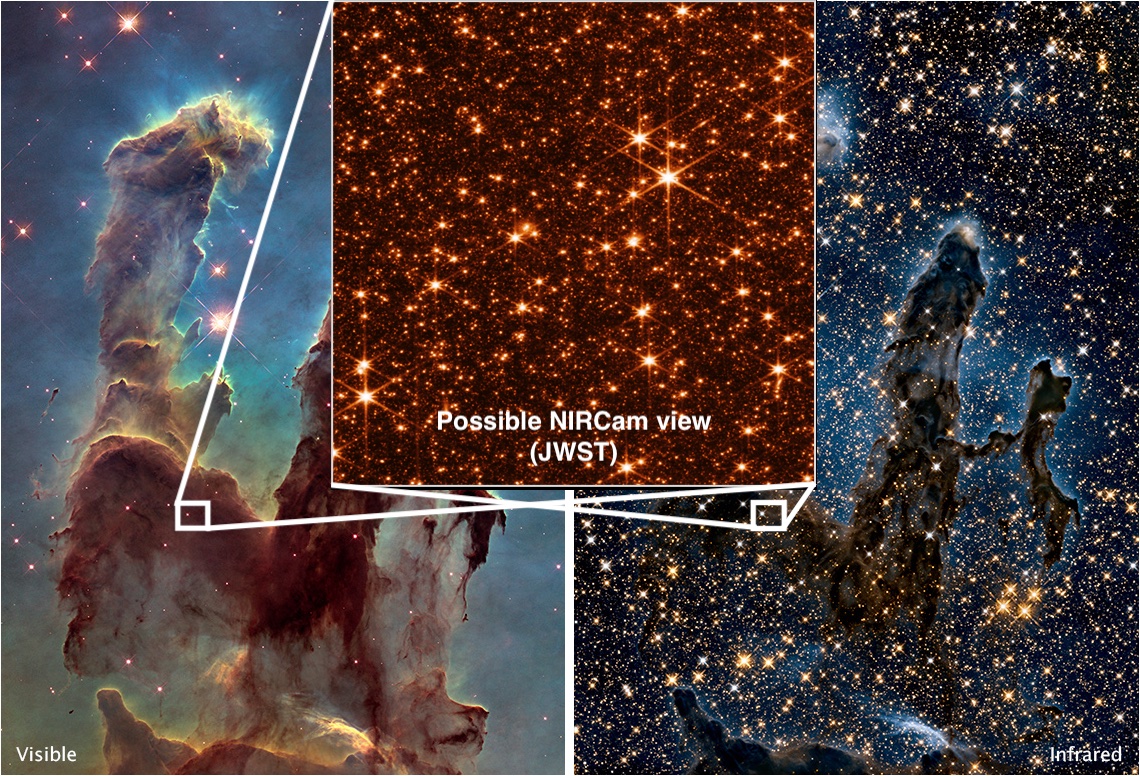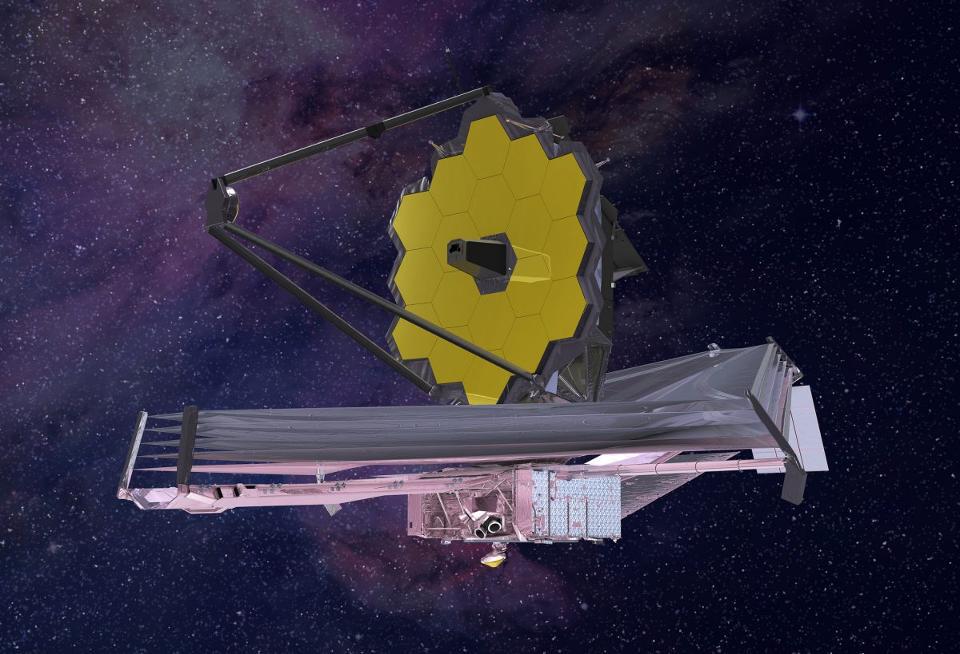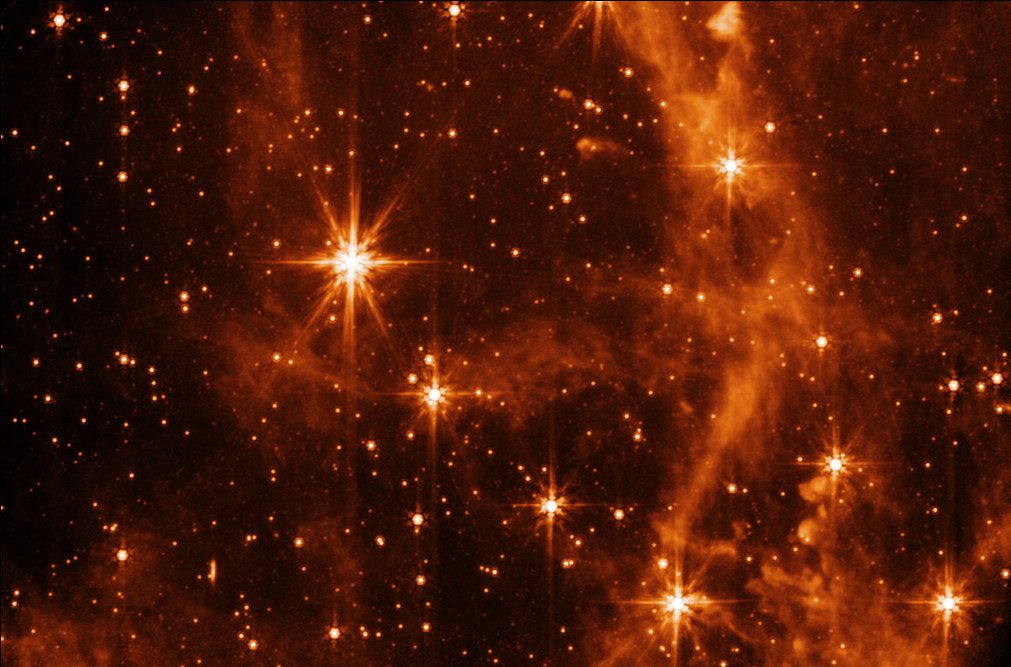James Webb’s first science images: before-and-after

- The first five science targets for the James Webb Space Telescope were chosen in secret, and the data was finally released on July 12, 2022.
- From star-forming regions to its first spectrum of an exoplanet to a stellar remnant to a galaxy group to a deep-field image, we’re seeing a panoply of JWST’s capabilities right away.
- It’s an audacious and impressive start to what should be a 20+ year science mission for JWST, with a slew of impressive new discoveries to kick things off.
The moment has finally arrived: the James Webb Space Telescope (JWST) is fully deployed, fully operational, and fully commissioned. As of July 12, 2022, it has officially returned its first suite of science data, shedding new light on a series of five targets that showcase the breadth of the observatory’s capabilities. Right from the outset, scientists using JWST have chosen to investigate:
- a nebulous star-forming region within our own galaxy,
- the spectrum of an exoplanet,
- an isolated, dying, Sun-like star,
- a tight-knit, compact group of galaxies,
- and a deep-field image centered on a massive galaxy cluster.
All of these targets had been observed before, but never by anything with the capabilities that JWST comes equipped with. For the first time in history, we’re now living in the era of the James Webb Space Telescope, with unprecedented resolution, light-gathering power, wavelength coverage, and instrumental capabilities. From the Solar System to exoplanets and protoplanetary systems, from stars to star clusters and the interstellar medium, and from black holes to galaxies to the large-scale structure of the Universe, JWST now begins showing us the cosmos in a whole new light.
Let’s take a look at what its golden, segmented eyes, at long last, finally saw.
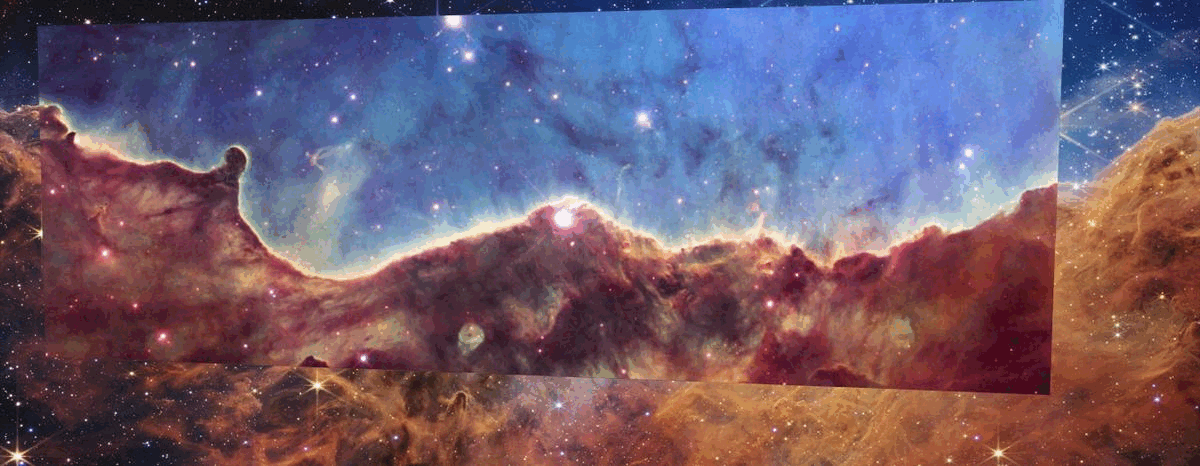
1.) The Carina Nebula.
Located between 7000 and 8000 light-years away within our own Milky Way, the Carina Nebula is an enormous star-forming region that spans nearly 300 light-years from end-to-end. This massive cloud of molecular gas collapses unevenly, leading to waves of new star-formation and copious abundances of compact star clusters. Inside, some of these young stars weigh in at over 100 solar masses, giving rise to stellar cataclysms and explosive events that echo throughout the cosmos. It’s so expansive that, if JWST were exclusively dedicated to observing the entire nebula with its full suite of instruments, the task would take years to accomplish.
But what JWST did, instead, was to take a look at one very small, specific region within the Carina Nebula: NGC 3324, a young star-forming region colloquially known as the “Cosmic Cliffs.”
Although there are a plethora of fascinating scientific details that have been newly exposed here, perhaps the best way to experience the advances from JWST is to simply look at a before-and-after comparison of what this region looked like through the best previous observatory’s eyes (in this case, Hubble’s), and to see what it looks like through the lens of our newest, most powerful space telescope, in both near-infrared and mid-infrared light.
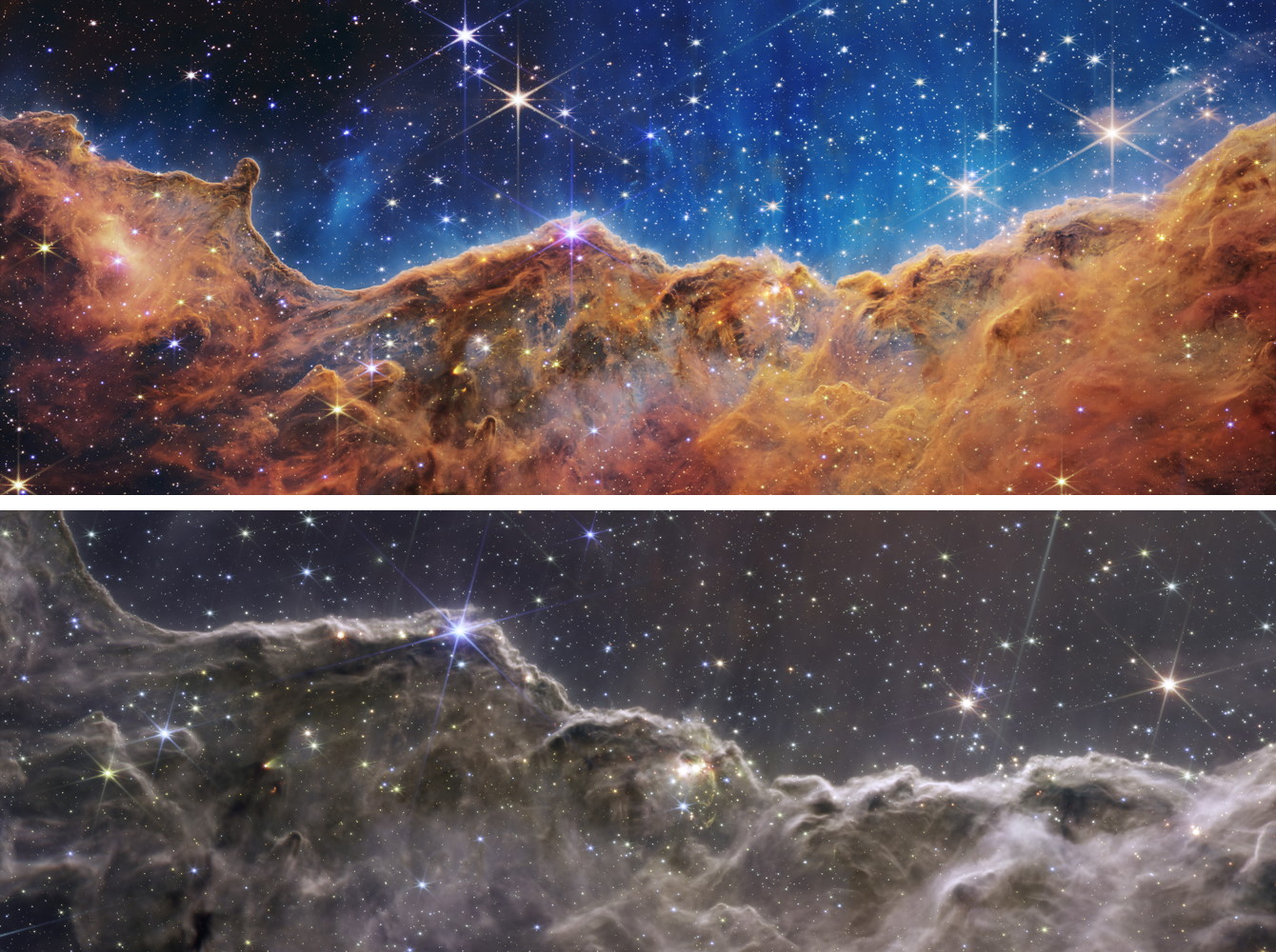
On one side of the “cliffs,” you can see a gigantic cavity that’s been carved by the hot, young, newly formed stars that are to the upper-right of the cliffs as shown here. The radiation and winds are blasting the neutral matter, evaporating it from the outside. But on the other side, in the gas-rich region, new stars are actively racing to form before their material is depleted away. The conflict results in a variety of features.
- What appears to be “blue steam” arising from the top of the mountains is hot, ionized gas being blown out of the nebular region.
- What appear to be “pillars” rising above the gas are actually denser clumps of matter that are slightly more resistant to being boiled away by the external radiation. In some cases, new stars are already forming inside them.
- Internally to the gas-rich region, cavities can be seen; these are blown by newborn stars that are successfully ionizing the gaseous material from the inside.
- Plus outflows and jets of material are arising from within the gas-rich region, a spectacular phenomenon with many different specific incarnations.
Over a relatively short timespan for astronomers — just 50,000 to 100,000 years — the shape and composition of this region will change dramatically. Individual stars can form, end-to-end, over a timespan this short, and that’s likely all the time that many of them will have. Like many places in the Universe, a cosmic race is taking place between gravity and other dissipative forces. Only where gravity wins, and new stars form, will there be detectable survivors once the gas is gone.

2.) Exoplanet WASP-96b.
Like many among the first exoplanets discovered, WASP-96b is a gas giant planet that orbits its parent star very tightly: with a period of just 3.4 days. The star it orbits is similar to our Sun: a G-class star of approximately the same mass, radius, and temperature as our own parent star. The giant planet gravitationally tugs on its parent star so significantly that it causes the star to “wobble” in its orbit, enabling us to determine that even though this exoplanet is as large as Jupiter, it’s only half of Jupiter’s mass.
Meanwhile, its very close proximity to its parent star ensures that its atmosphere’s temperature has skyrocketed: up to 1300 K, which is roughly constant across the planet, day or night. In general, this class of “hot Jupiter” exoplanets is expected to have very deep, strong spectroscopic signatures, and for a very simple reason: a big, deep exoplanet atmosphere makes big, deep emission (and absorption) line signals. Normally, gas giant planets are cloud-rich, but that’s why WASP-96b is special: it’s virtually cloud-free.
Seeing a spectrum isn’t something most of us are familiar with, but let’s take a deep look at this one to unpack what’s remarkable about it.
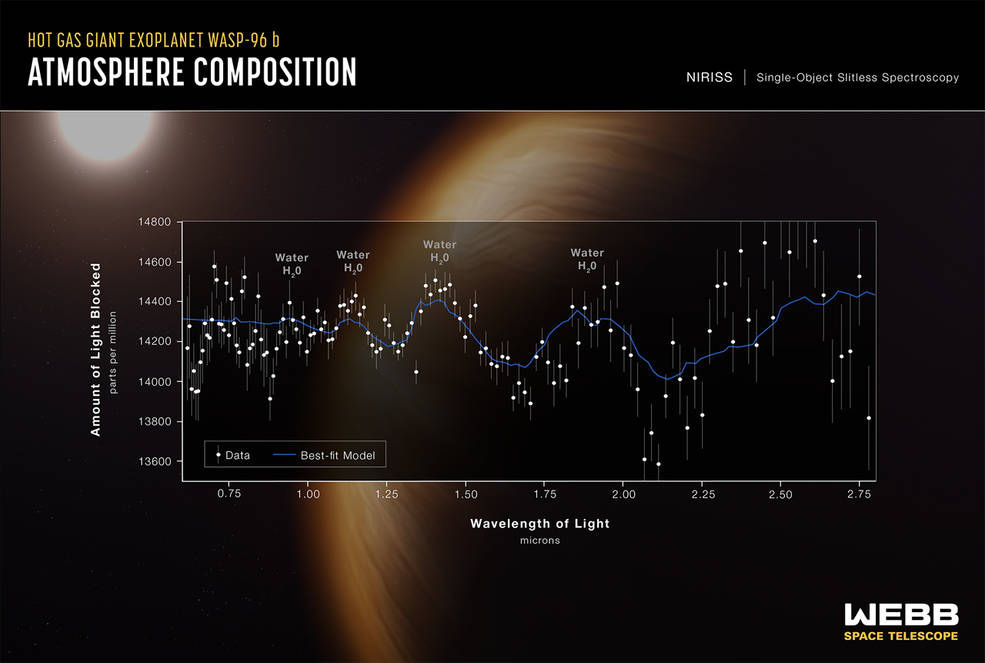
You might have wondered what lies beneath the clouds of the gas giants in our own Solar System, like Jupiter. We can’t see that, of course, because Jupiter’s clouds are in the way. But for WASP-96b, the lack of clouds means that we can see what lies all the way down in the depths of a gas giant’s atmosphere, and for the first time we have an answer: water. Wow, is there a lot of water in this exoplanet’s atmosphere!
We had previously detected the presence of sodium, and that’s definitely still there, but that was because we were restricted to wavelengths that we could have previously seen. (And sodium emits and absorbs in optical wavelengths.) But at longer wavelengths, water molecules excite and de-excite with a particular signature, and JWST is the first observatory capable of pulling out a spectrum with water’s characteristic signals imprinted on it. It’s present, it’s abundant, and it’s just the start; perhaps, in just a few years time, we’ll learn if all gas giants, including our own, are as water-rich as WASP-96b is.
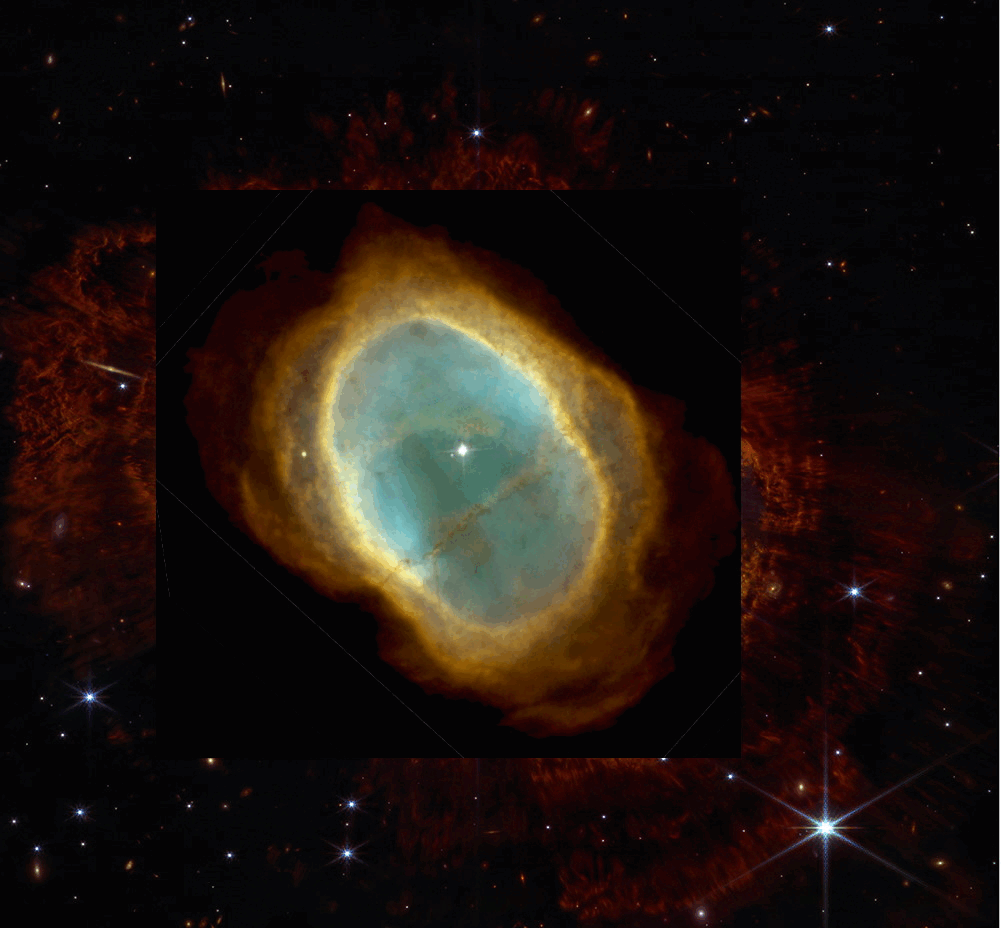
3.) The Southern Ring Nebula.
Someday, like it or not, the Sun will die. This is the fate of all stars: they fuse light atoms into heavier ones in their cores, and when they exhaust the fuel that they can fuse, their cores contract and heat up. If they reach high enough temperatures to begin fusing the products of the previous fusion reaction, the star can live a bit longer, reaching the next stage of the stellar life-cycle. But most stars, including both the Sun and the star that’s giving rise to the Southern Ring Nebula, will never make it past the stage of helium fusion.
When a Sun-like star dies, it does so in a striking fashion. First, it gently blows off its outer layers, creating a gas-rich pre-planetary nebula. Then, the core of the star contracts down until its no bigger than planet Earth, despite containing almost a full solar mass’s worth of material. This contraction causes the stellar remnant — which becomes a white dwarf — to heat up, which in turn heats, ionizes, and blows outward the material already present in the outskirts. These planetary nebulae expand, shining for only a few thousand years before fading away entirely. With its new view of the Universe, here’s how JWST’s views far outstrip the previous best (Hubble) view.
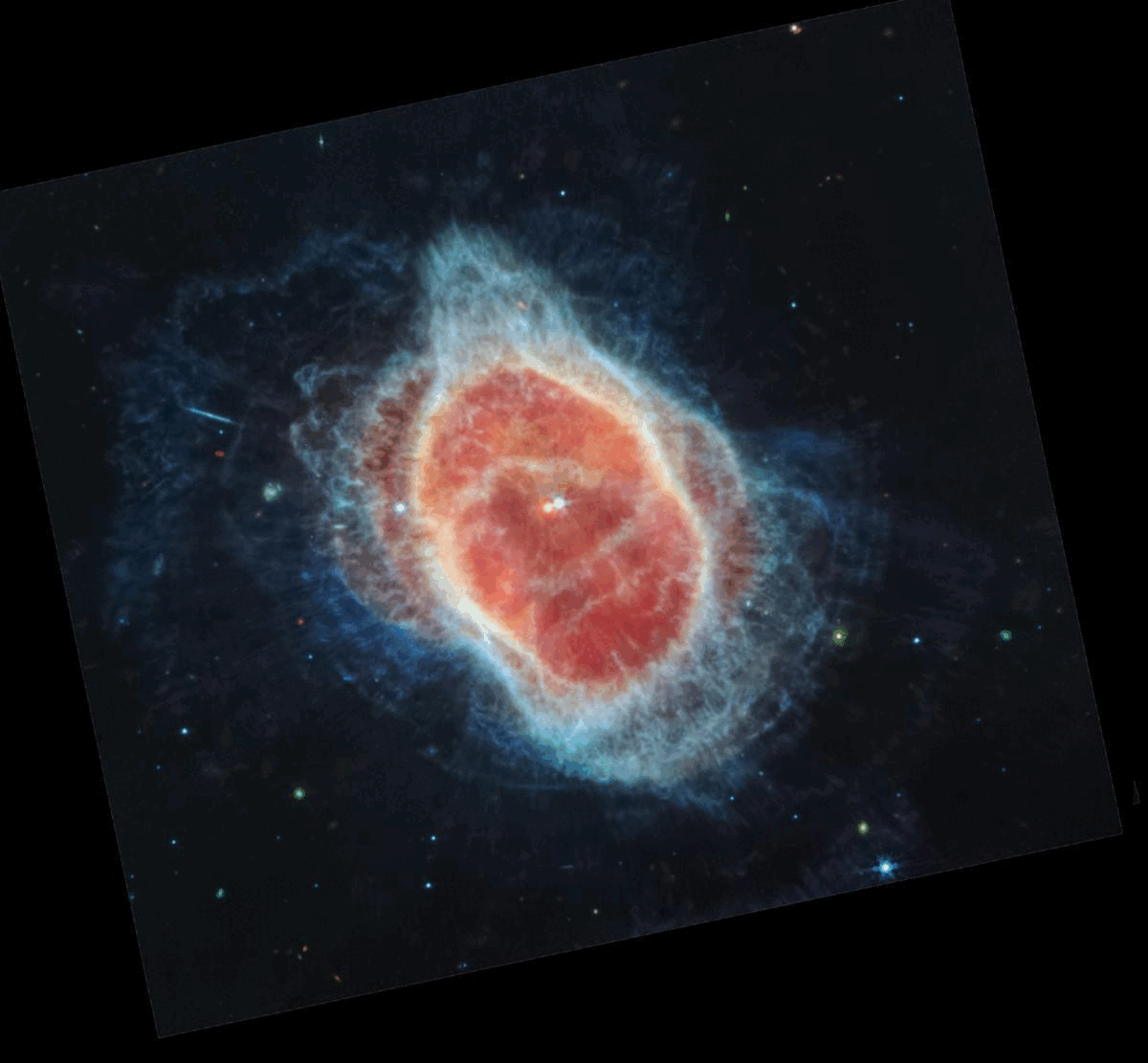
First off, this is not a single, isolated star like our Sun, but rather is a part of a binary system. For the first time, JWST’s infrared eyes have revealed both components: it really is a binary system. Second off, if you look at the outskirts of the nebula (on the left), you’ll see a tendril-like feature; that was actually identified to be a background, edge-on spiral galaxy that simply happens to overlap, on the sky, with the outskirts of the Nebula. (There’s another face-on galaxy closer to the nebula itself, too.) You can see how temperatures vary throughout the nebula as well, as different wavelengths of light are lit up with relatively different brightnesses by regions of different temperatures.
But what jumps out to me the most is simply how sharp JWST’s views of the Southern Ring Nebula are. You can see the knots in the gas and dust; you can see how tenuous the material is outside of the “bubble” as compared to the inside, and how there are rope-like structures along the edge of the bubble.
There’s an idea in astronomy that perhaps you need to have a binary progenitor system to give rise to a planetary nebula that’s visible at all, and the validation that the Southern Ring Nebula arises from a binary system supports that view quite strongly. Already, with its first science results, JWST is providing evidence that can help resolve some of the longest-standing cosmic conundrums.
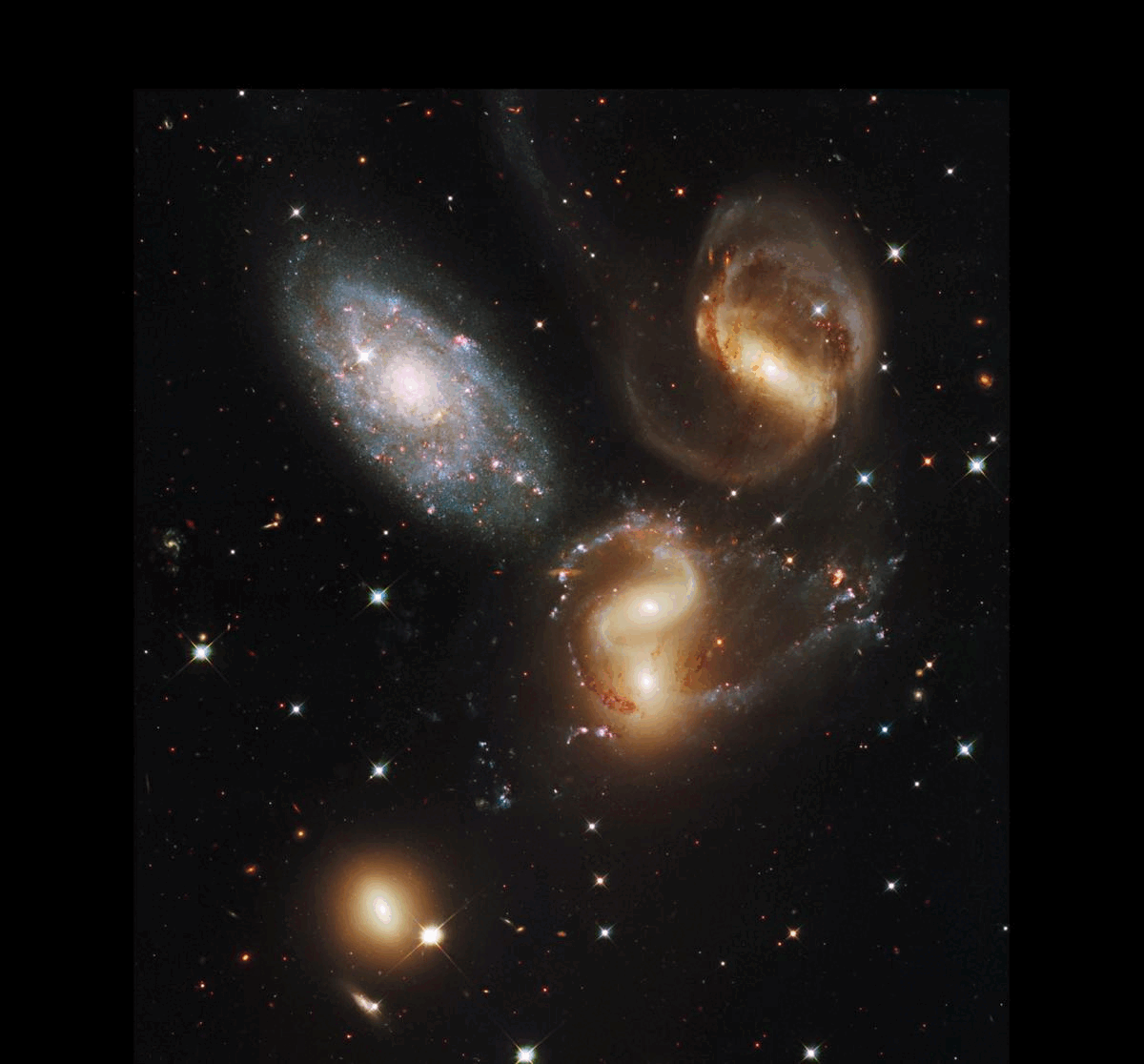
4.) Stephan’s Quintet.
Discovered nearly 150 years ago, this quintet of galaxies is both the first compact group of galaxies ever discovered, and simultaneously, not what it seems. Located 290 million light-years away, there are two galaxies in the process of merging together, flanked closely by two other galaxies that are simultaneously gravitationally interacting with one another as well. But the fifth galaxy — the bright, sharp spiral galaxy — is completely unrelated. It just happens to be located along the same exact line-of-sight, but it’s only 40 million light-years distant; the “quintet” is only in appearances from our perspective.
But these interacting galaxies are actually a part of a larger, more expansive group of galaxies; the two that are in the process of merging and the two that flank it are surrounded by others in wider-field views. The colliding-and-merging galaxies are expelling gas, forming new stars, and creating streams of material that glow in a variety of wavelengths of light. Although X-ray emissions had previously been seen along the interface of these colliding galaxies, JWST gives us the opportunity to probe longer, lower-energy wavelengths, literally shedding new light on this spectacular grouping.
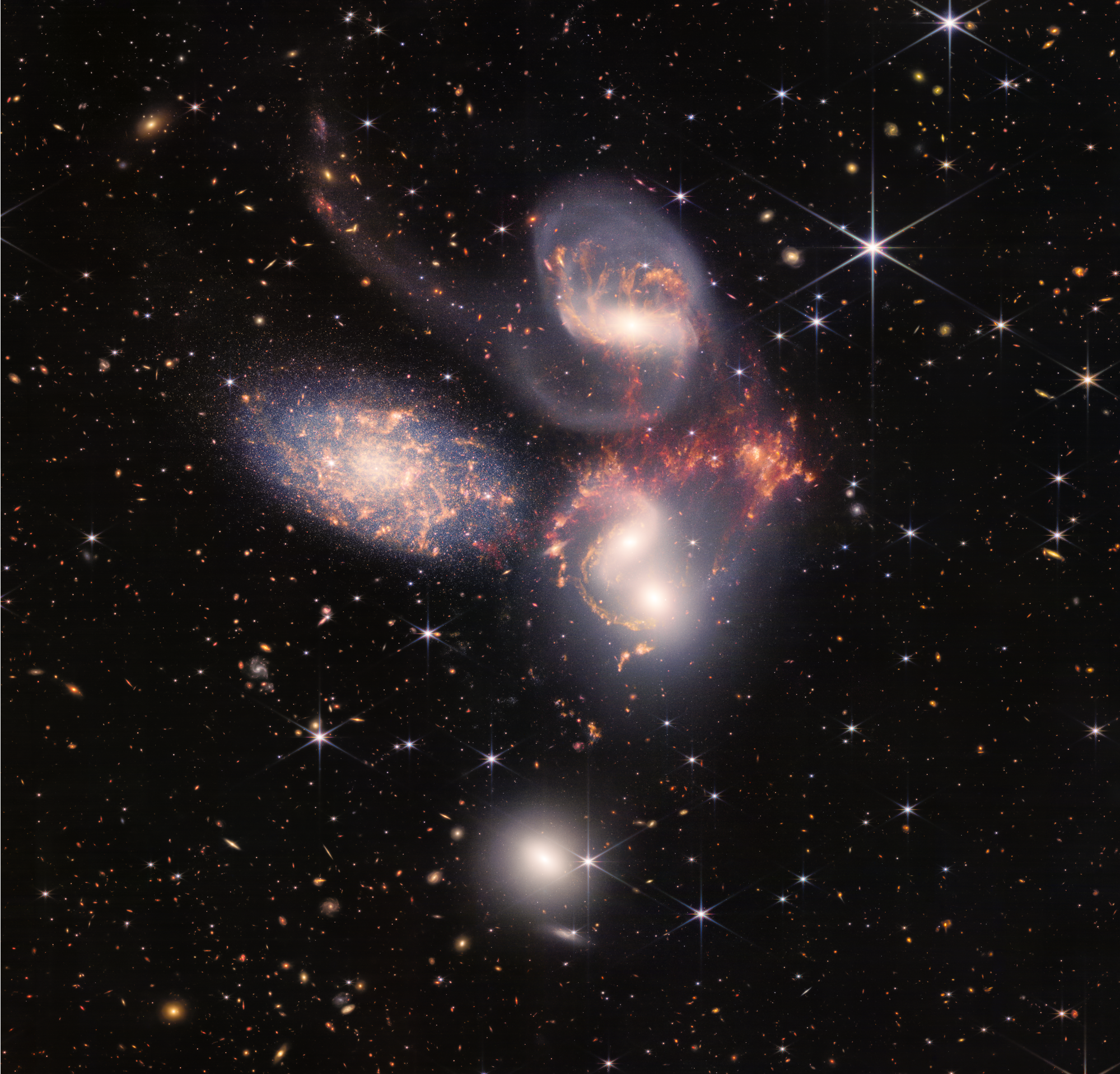
But with JWST’s infrared eyes, we can see the spectacular extended features produced by tidally disrupted and stripped gas. A result of gravitational interactions, these galaxies are having their shapes distorted, but thanks to JWST’s long-wavelength coverage, we aren’t just seeing the stars. Instead, the gas and neutral matter shines due to heating during the collision. New stars are being born in those more distant galaxies, 290 million light-years away, while JWST is so powerful that it can resolve individual stars in the foreground galaxy that’s merely 40 million light-years distant.
My favorite feature is the background galaxies that appear even more distantly than the quintet featured here, and that’s because JWST’s eyes are sharp enough and sensitive enough to not only tease out the features we’re attempting to observe, but to resolve any distant sources of light that can be seen by its instruments. There’s an old saying in astronomy: that one astronomer’s noise is another astronomer’s data. Even when other objects are the target, the distant Universe is always in play whenever JWST takes a long-exposure observation of a region of space.
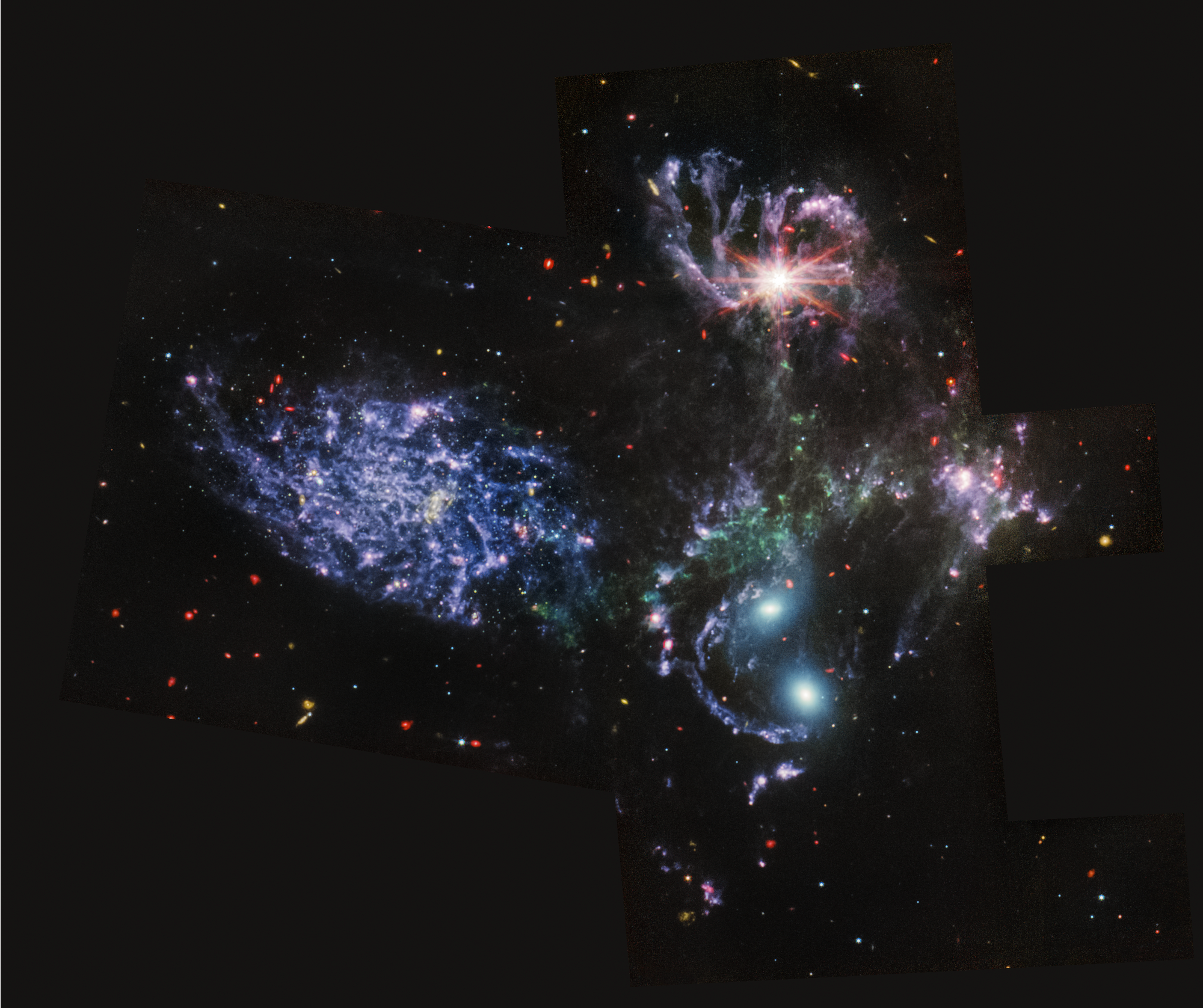
Focusing back on the cluster of galaxies itself, however, the various wavelengths of light expose a variety of features inside each of them. In the mid-infrared alone, however, you only see the gas and dust, plus one never-before-seen feature in some of these galaxies: supermassive black holes. The topmost galaxy is active, emitting radiation, as an actively feeding supermassive black hole. The variety of wavelengths over which JWST can observe, even in the mid-infrared, gives us so much information about these objects in mere days that we haven’t been able to uncover with over a century of observations prior to that.
By looking in the Universe past all prior frontiers, we’re revealing details that could never have been understood otherwise. By taking spectra of these objects and observing them across a series of wavelength ranges, we can unearth detailed properties about these objects, learning about their activity, what evolutionary stage they’re in, and what elements are present within them. This is only the beginning for JWST and for the next generation of science; the best is yet to come.
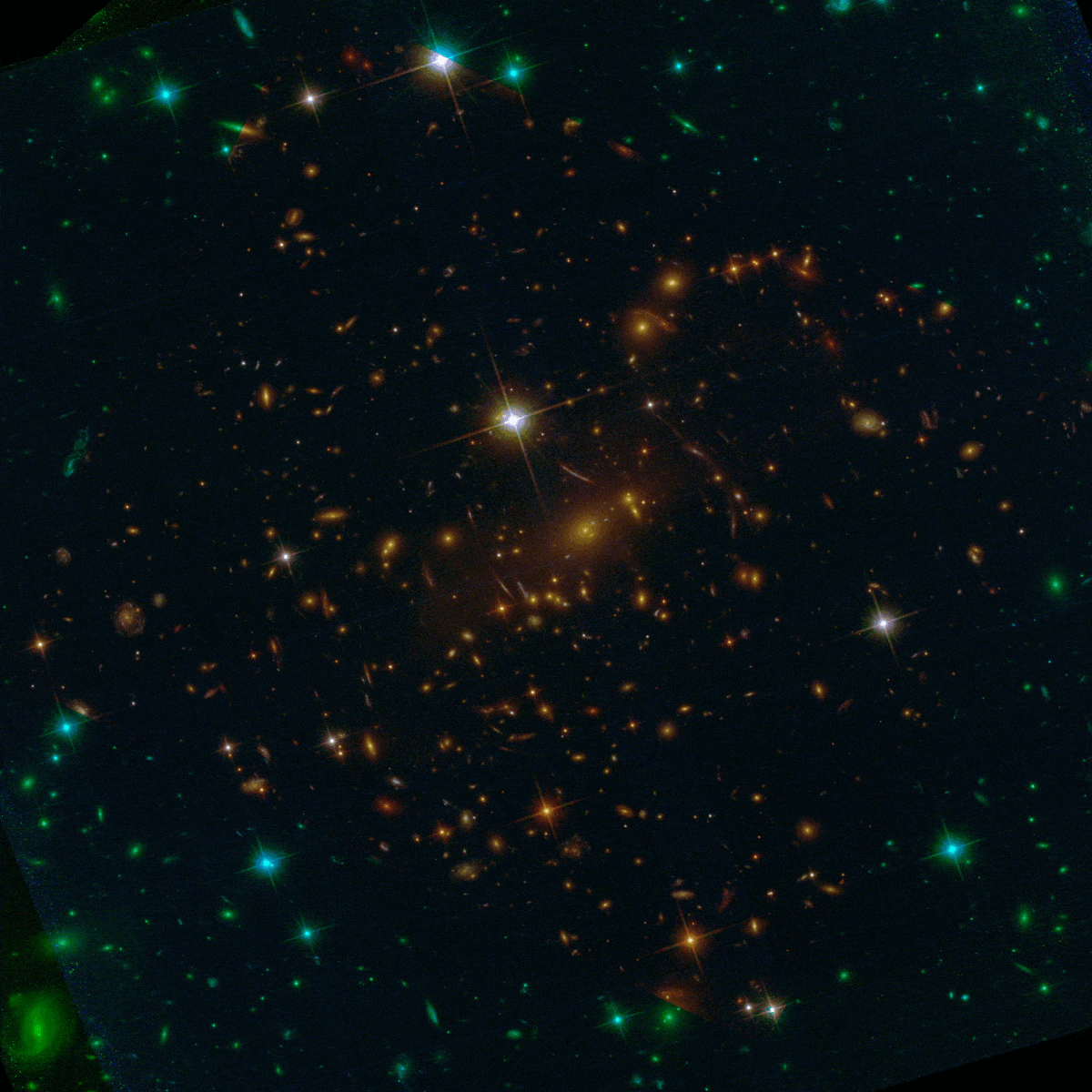
5.) Galaxy cluster SMACS 0723.
This one released a day early, so above, you can already see the comparison between the older (Hubble) data, which observed it in 7 filters spanning both optical and near-infrared wavelengths for a grand total of 3.4 hours, with JWST, which had 12.5 total hours of observing time. Immediately, a slew of features should pop out at you.
- The cluster’s central galaxy has not just diffuse “light” surrounding it, but structure: small galaxies and globular clusters.
- Some galaxies are very heavily distorted in their shape: a result of gravitational lensing, where the foreground masses actively distort (but also magnify!) the light from background objects.
- Objects that were previously invisible to Hubble now appear to JWST’s eyes; objects that were unresolvable by Hubble have now been resolved into multiple components.
- Galaxies that were simply “smudges” can now be seen to be exactly the type that they are: spirals, ellipticals, or even ringed galaxies.
- And numerous objects that were beyond the wavelength range of Hubble have come into view for JWST.
But what’s even more spectacular is what we see if we look at the difference between the near-infrared and the mid-infrared images.

Yes, you might lament that the resolution in mid-infrared wavelengths isn’t as sharp as it is in near-infrared wavelengths; don’t despair though, as that’s expected. Your telescope’s resolution is determined by the number of wavelengths of light that can fit across your primary mirror’s diameter, and that’s going to be a smaller number as we go to longer and longer wavelengths.
But the longer-wavelength light reveals two spectacular features. For one, it showcases the temperature differences between the neutral matter within each galaxy; galaxies that otherwise seem indistinguishable at shorter wavelengths can appear starkly different at mid-infrared wavelengths. This data will help us better understand the natural variations that galaxies possess.
But the second feature isn’t something you can visually see: spectral lines of atoms like hydrogen and oxygen. By identifying them, we can solidly determine at what particular distance and redshift these galaxies are located. The ultimate cosmic record for distance hasn’t been broken with JWST’s very first deep-field image, but you can be certain that future JWST surveys, like COSMOS-Web and PANORAMIC, will accomplish exactly that task.
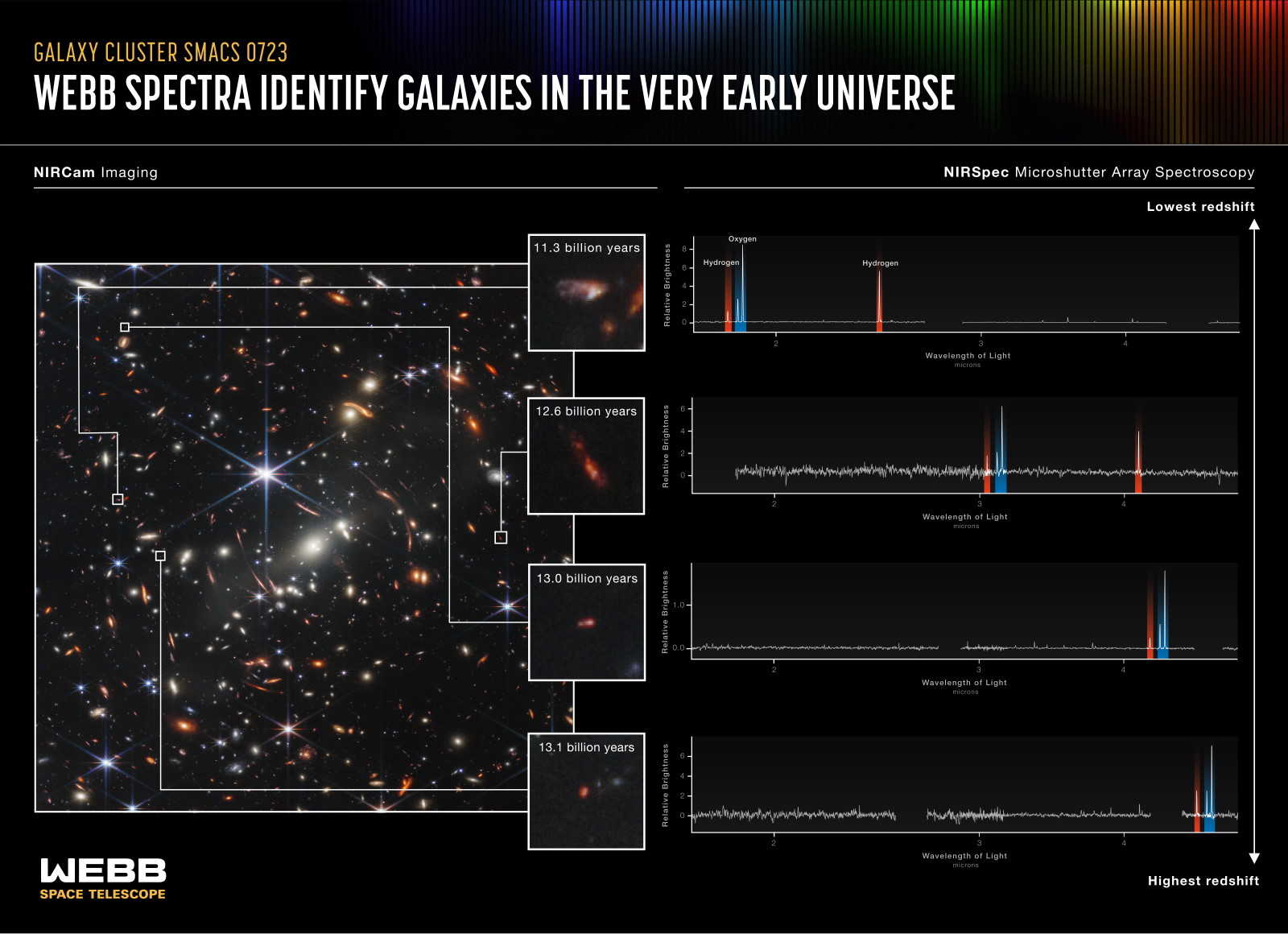
What’s most important to remember, however, is that this is only the tip of the cosmic iceberg that JWST will eventually reveal to us. What’s been released so far only represents days worth of scientific data; we have years and decades of this level of science to look forward to. The first science results don’t include anything from the Solar System, from newly-forming planetary systems, from the space between galaxies, or from the largest-scale cosmic structures of all.
It also wasn’t supposed to include any data on active supermassive black holes, but thanks to a serendipitous discovery within Stephan’s Quintet, it wound up revealing an unexpected one after all.
There are a great many new discoveries that are on their way, and many of them will be even greater surprises to us than what we’ve seen so far. It’s a reminder of what we can accomplish when we work together toward a common goal, rather than focusing on the differences that divide us. And it’s one more stunning example of what pooling our resources to accomplish something spectacular — what NASA administrator Thomas Zurbuchen has called “civilization-class science” — can bring to all of humanity. In the great quest to understand the Universe, the first science results from JWST have truly given us a giant leap forward, with much more to come!
